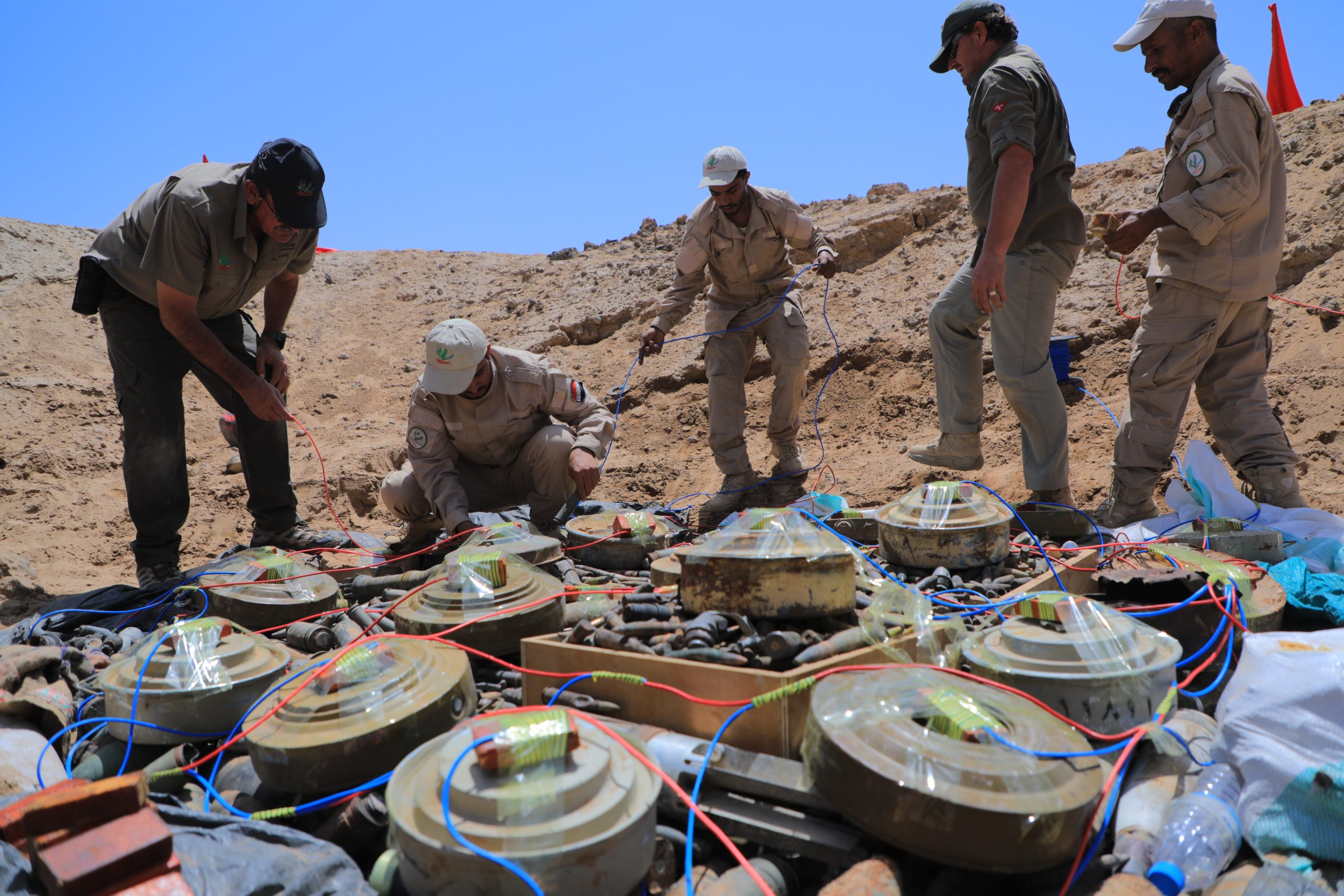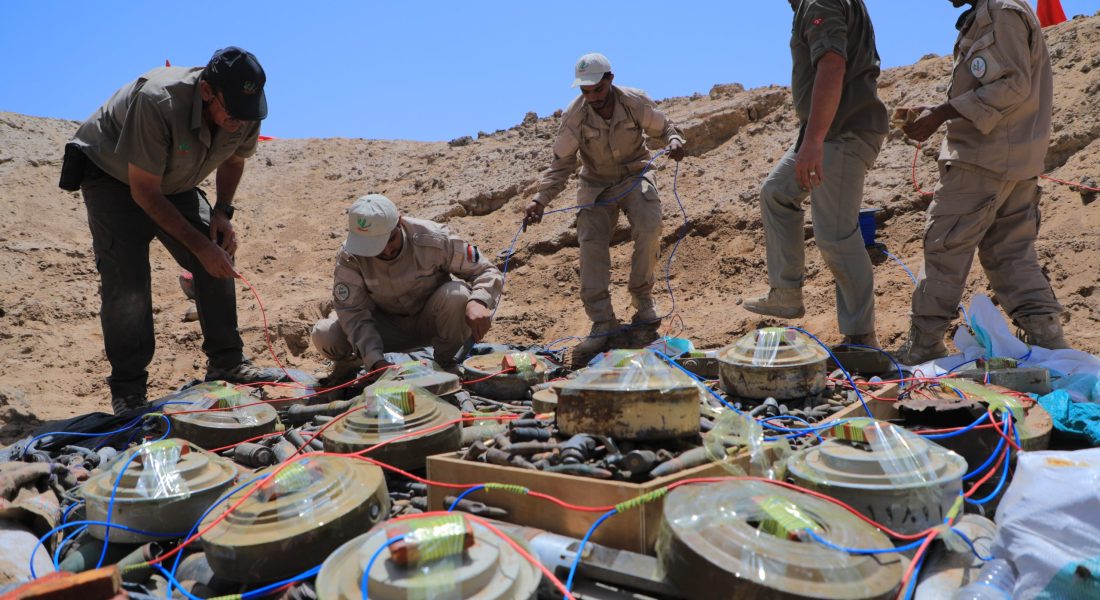
In recent months, civilians, local authorities and those involved in demining operations in Yemen have described the evolving landscape of the proliferation and indiscriminate use of landmines — both anti-personnel and anti-tank — as extremely worrisome.
Whilst the Houthis’ use of landmines has been widely documented since at least 2015, the sheer number of landmines planted in recent months has led experts to warn that the armed group’s new tactics could hamper mine eradication in Yemen, as well as pose an increased threat to the safety, health and lives of Yemenis.
Since the conflict between Yemen’s pro-government forces and Houthi militias escalated in 2014, liberated strategic areas have been left littered with anti-personnel mines and anti-tank mines, along with unexploded explosive remnants of war (ERW).
Chris Clark MBE MC, the Director of Special Projects for humanitarian mine clearance Project Masam, who has been working in Yemen since mid-2018, said: “Since the Vietnam war, we have never seen that many landmines planted over such a short period of time — and we are just speaking about the number of those we have found so far, which will be a fraction of the actual total landmines emplaced as we do not have access to the entire country.”
Clark, a former senior member of United Nations Mine Action Service (UNMAS) with twelve years of operational management of United Nations Mine Action programmes preceded by 17 years of distinguished service in the British Army, explained the Houthis’ extensive proliferation is only possible in the country because a significant portion of landmines planted are produced domestically.
“In Yemen, the vast majority of newly-planted landmines we find are not standard military mines,” he said. “Over 90% have not been manufactured in or acquired from a military factory, instead they are locally produced using high quality components to a high standard. This is a homemade “cottage industry” on a massive industrial scale.”
Knowledge, technology, funding and access to this industrial scale production mean that huge swathes of land are now being strewn with banned anti-personnel, and anti-tank, landmines following Houthis’ withdrawal from cities.
“Let me give you an example in Shabwah and areas south of Marib, where we worked for two years before a big Houthi push [in 2021]. The number of landmines found by our teams had started to drop before they took over.”
“After the Coalition pushed the Houthis out of those areas, hundreds of thousands of new landmines had been planted over the last months. On a daily basis, the number now found is off the scale when compared to prior to the Houthi takeover.”
The reasons for the sharp increase in the use of landmines? They are two-fold.
One is a purely military reason, Clark explained.
“The armed forces the Houthis can draw from is quite small, compared to the armed forces the Hadi government and Coalition can draw from. By planting landmines, the Houthi attempt to balance the odds by using an internationally stigmatised practice of laying landmines.”
Secondly, landmines are used for purposes of population control.
“Tens of thousands of civilians have been and are either killed or maimed by landmines in Yemen alone. The children of many families also suffer horrific landmine injuries — at a time when Yemen’s public health facilities are under severe strain. Civilians are displaced by landmines, or the threat of them.”
Once the Houthis withdraw from an area, the emplacement of landmines and improvised explosive devices (IEDs) can only be to hinder the re-population of those areas, Clark said.
“Landmines, of all types, are an area-denial weapon: it is an effect against civilians, and this allows them to divide control, more or less. Landmines are used for demographic change.”
Clark added: “All civilians want to do is return home, and resume some form of economic activity. But when you lose your goat or cow to a landmine, you’ve lost your livelihood. You can’t survive there.”
Anti-personnel landmines, which production, stockpiling and use of are banned by international law, violate people’s fundamental rights to life, liberty and security. Tragically, civilians are the first victims of anti-personnel landmine explosions.
On 28 January 2022, Project Masam announced it had cleared its 4,500th anti-personnel landmine in liberated area of Yemen, weeks after the project confirmed it had cleared over 100,000 anti-tank mines since mid-2018.
This article was first published on Medium.

